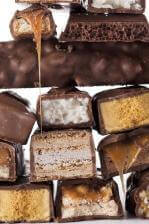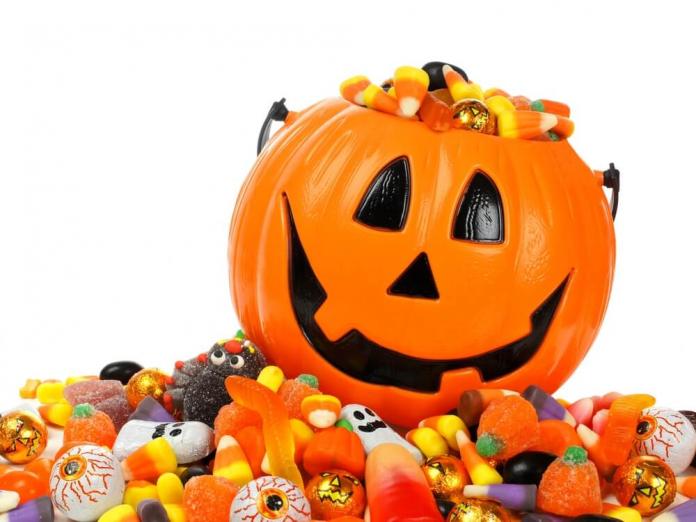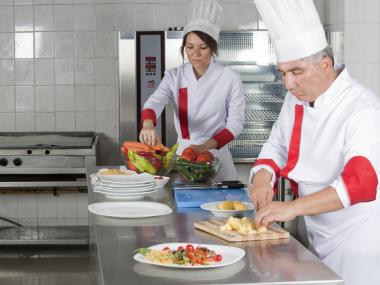4 Science Experiments for Leftover Halloween Candy
What to do with all that leftover Halloween candy? Here are four easy science experiments to explore chromatography, acidity, osmosis, and density with candy.
The jack-o-lantern candles have gone out, the costumes have been discarded, and the spooky décor has been stashed away for next year, but you are still left with the spoils of trick-or-treating: heaps of leftover Halloween candy. Instead of eating it all, why not use it for some science?
Chromatography
The process of separating and analyzing the components of a mixture is known as chromatography. Chroma is the Greek word for color and what is more colorful than candy?! Often what appears to be a single color dye, especially for brown or black candy, is really a mixture of several different colors. Anyone who has seen their kids mix many vibrant colored mounds of play dough together to form one unsatisfyingly brown blob knows this to be true.
Separating the colors in candy only takes a few household items. A great duo to start with is a brown M&M and a brown Reese’s Pieces. They both appear to be the same color brown, but as we will see, the colors that blend together to create that brown are very different. First, dip the candy in water and then use it to paint a stripe about two inches from the end of a strip of coffee filter paper. You may need to do this several times to get a good, clear line. Alternatively, if you find this to be too difficult, instead wet the candy and run a creased filter over top of it to make the line.
Next place the very tip of the filter strip in a glass of water so that your brown candy streak is just two inches or so above the water line. As the filter absorbs more and more of the water, the moisture will travel up the filter toward your mark. (This could take a few minutes, so you’ll have to be patient.)
As the water climbs up the filter, it will carry the dye with it. Lighter components will be able to travel farther while the heavier components of the dye will get left behind. What differences do you see between the chromatography results for the two candies?
Acids and Bases
When you taste something as sour, that is your brain’s way of telling you that you are eating something acidic. Acids are substances that will donate their hydrogen ions when dissolved in water. (Note that bases are the opposite of acids: they will accept hydrogen ions when dissolved in water.) Acids are defined as having a low pH and produce carbon dioxide gas when they react with carbonates (a kind of salt that consists of a carbonate ion).
An example of a carbonate that you likely have lying around the house is sodium bicarbonate, which also goes by the name of baking soda. Fill a few cups with water (it helps if the cups are clear so that you can see the reaction better) and drop different kinds of candy in each one. Sour candy like Nerds and Sweet Tarts work well for this experiment. Then add a spoonful of baking soda. Since these candies are sour, they are highly acidic and the resulting reaction will produce bubbles of carbon dioxide gas.
Which candies make the most bubbles? If you crush the candy first, does it speed up or slow down the effect?
Osmosis Through Gummy Candy
The procedure for this experiment is simple: leave a gummy candy to soak in a cup of water over night. Come up with some hypotheses as to what will happen to your candy after spending a night in its watery bed. Note that gummy bears work well for this, but some other candies, like certain brands of gummy worms, are not as resilient and tend to disintegrate.
Besides just looking cool, the result is an example of a process called osmosis. When a substance is dissolved in a liquid (like salt in water), the liquid is called a solvent while the substance is called a solute. When a semi-permeable membrane separates a region of high concentration (lots of solute in the solvent) from a region of low concentration (trace amounts of solute in the solvent), osmosis occurs: some of the solvent leaves the area of low concentration by passing through the membrane in order to join the area of high concentration. Since the ratio of solvent to solute is then lowered on the high concentration side, the concentration there is lowered. The opposite effect results on the low concentration side: since it loses some of its solvent, the concentration goes up. The transfer continues until the concentration on either side is balanced or roughly equal.
The process of osmosis is incredibly important in our biology since our cell membranes are semi-permeable. Water is transferred in and out of the cells in our body thanks to osmosis.
The semi-permeable membrane in our candy experiment is the outer layer of the gummy candy. The concentration of sugar in water within the gummy bear is higher than in the surrounding cup of water. Thus the bear will absorb the water through osmosis and grow in size.
So, what would happen if we added some salt to the water in the cup? This time our solute is the salt, and there is a higher concentration of salt outside of the gummy candy. Thus water will leave the candy in an effort to lower the concentration of salt in the surrounding cup of water. This will cause the gummy candy to shrink!
Do you get the same result if you repeat the experiment with different liquids like vinegar or honey? What happens if you leave the gummy candy in the water for another night? If you have a small kitchen scale, you can take the data collection one step further by measuring the mass of the candy before and after the experiment.
Will It Sink or Float?

To illustrate the concept of density, and that both mass and volume play a role, take two equal size candy bars of different types of candy. A great example is a fun-sized Snickers bar and an (equally fun-sized) Three Musketeers bar. Place both candy bars in water, and you will see how despite their similar appearance, you will get very different results.
The whipped nougat center of the Three Musketeers bar is full of air making the candy bar less dense than water: it will float. The Snickers bar, on the other hand, is full of nuts and caramel which send it straight to the bottom of the water.
You can also experiment with different liquids. For example, lifesavers will sink in water but they will float in corn syrup. This means the density of the lifesaver must be greater than that of water, but less than that of corn syrup.
Until next time, this is Sabrina Stierwalt with Ask Science’s Quick and Dirty Tips for helping you make sense of science. You can become a fan of Ask Science on Facebook or follow me on Twitter, where I’m @QDTeinstein. If you have a question that you’d like to see on a future episode, send me an email at everydayeinstein@quickanddirtytips.com.
Images courtesy of Shutterstock.







